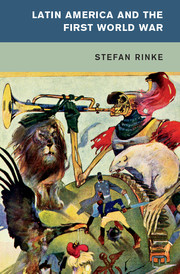Book contents
- Frontmatter
- Contents
- List of Figures
- Preface
- List of Abbreviations
- Introduction
- 1 The Global Context before 1914
- 2 Neutrality under Pressure, 1914-1917
- 3 In the Wake of War, 1917
- 4 Turbulent Paths into a “New Era,” 1918-1919
- 5 The Demise of a World
- 6 Nation and Trans-nation
- Epilogue: The Global Legacy of the World War
- Sources and Literature
- Chronology
- Index
3 - In the Wake of War, 1917
Published online by Cambridge University Press: 09 March 2017
- Frontmatter
- Contents
- List of Figures
- Preface
- List of Abbreviations
- Introduction
- 1 The Global Context before 1914
- 2 Neutrality under Pressure, 1914-1917
- 3 In the Wake of War, 1917
- 4 Turbulent Paths into a “New Era,” 1918-1919
- 5 The Demise of a World
- 6 Nation and Trans-nation
- Epilogue: The Global Legacy of the World War
- Sources and Literature
- Chronology
- Index
Summary
In January 1915, when it was already obvious that the war would take much longer than originally anticipated, the Argentine daily La Nación commented: “It is highly unlikely that this continent will be pulled into the vortex.” Two years later, this estimation would prove false. Actually, the war emanating from Europe had expanded into a global conflagration long before 1917. Latin America, which contributed to the conflict by exporting war-critical raw materials, was impacted in a variety of ways due to the economic and propaganda war. Nevertheless, the year 1917 would turn out to be an important milestone for the subcontinent: The United States, but also many Latin American countries, officially entered the war, which until then had taken place (if only officially) outside of their own hemisphere. Thereby Americans broke with the more than 100-year-old principle of Pan-American foreign policy to avoid entangling alliances. As a consequence, the war's ongoing pull on the whole of Latin America became much stronger. The political and socioeconomic problems apparent since August 1914 were exacerbated and the emotional character of the public debates gained in intensity. In addition, the events of 1917 gave rise to new fundamental questions about the relationship with the United States and the individual treatment of national minorities. Above all, however, Latin American countries faced the serious decision about whether to enter the war on the side of the Allies or to maintain their neutrality.
SUBMARINE WARFARE AND THE UNITED STATES
The fact that this decision had to be made was due mainly to the radicalization of the German war effort by means of unrestricted submarine warfare against merchant ships in general. In 1915 and 1916, the German Reich had once again limited its use of submarines, primarily because of pressure from the U.S. government. When the hardliners prevailed in the German high command at the end of 1916 and not only ignored President Wilson's peace initiative in December, which had received wide approval in Latin America, but also once again took up a policy of unrestricted submarine warfare on February 1, 1917, the United States made good on its threat by breaking off diplomatic relations with the Reich two days later.
Although this was still not a declaration of war, the U.S. diplomats gave an unambiguous signal to their counterparts in Latin America of what they now expected from them.
- Type
- Chapter
- Information
- Latin America and the First World War , pp. 108 - 160Publisher: Cambridge University PressPrint publication year: 2017

